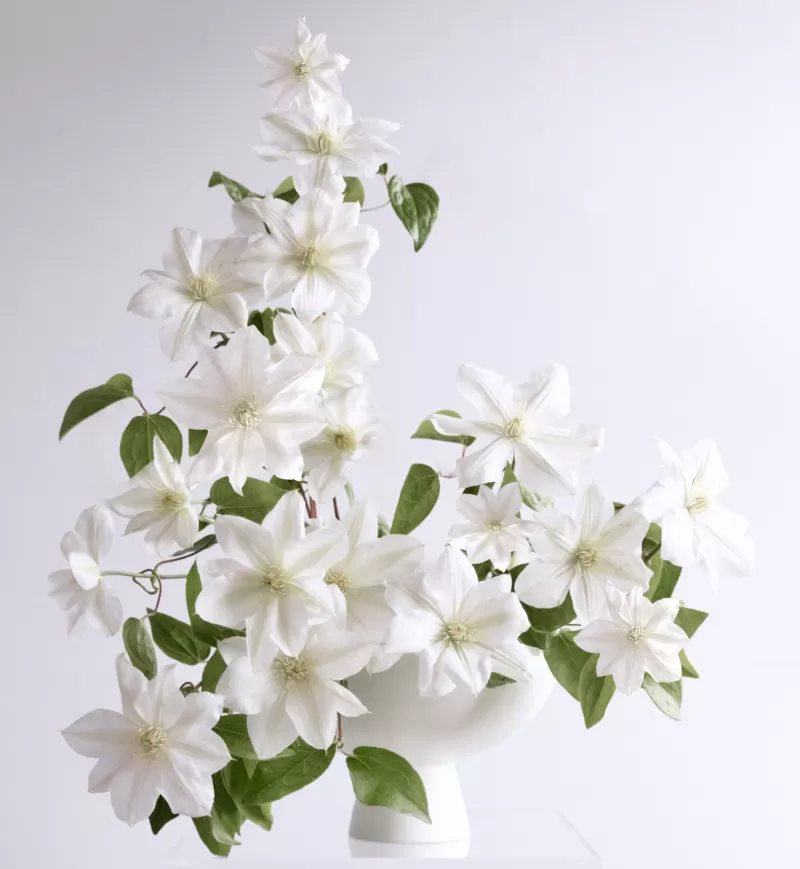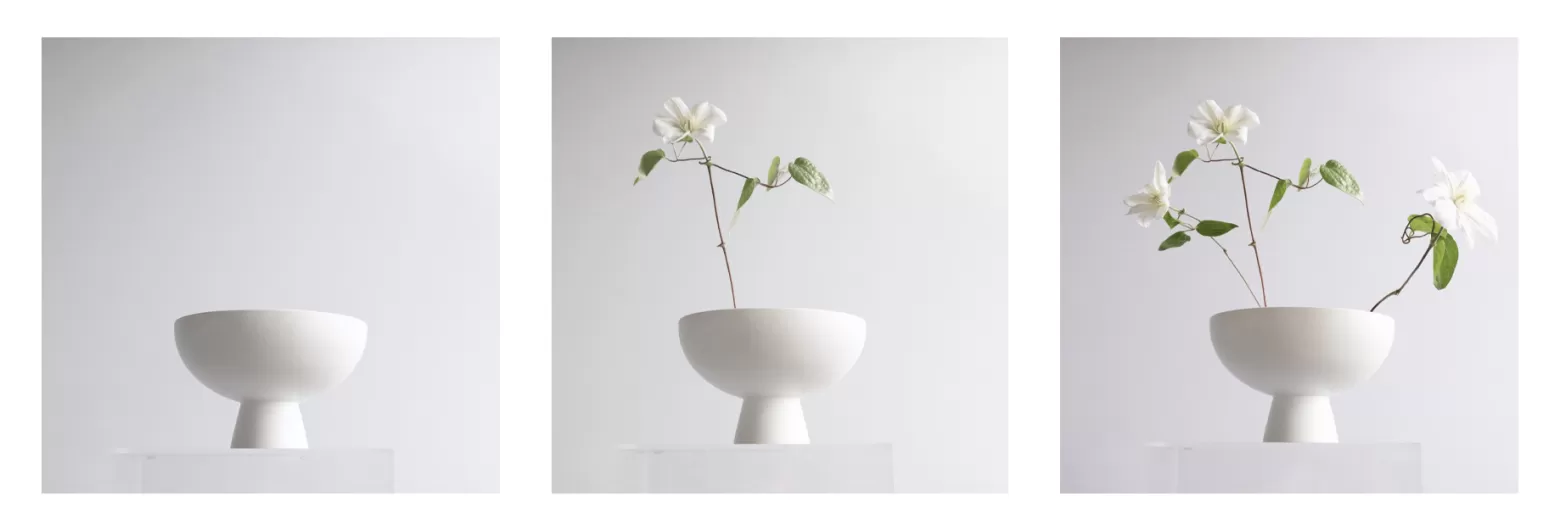
fter seeing Joseph Massie's skills in the previous story, we know you can't wait to make something magical yourself. Well, you are in luck! Joseph has kindly shared one of his 'How I made it' tutorials here with us.
Joseph: “Sometimes, some flowers sing better when they’re placed with other flowers - I guess that is true of most arrangements, right? Whilst we know that the act of combining blooms can certainly make for a stronger impression on occasion, through my practice I’ve often found that it takes something special, a really charismatic flower, to shine when it is arranged entirely alone. In this design, I’m working with one of my very favourite new flowers - Clematis Amazing® Vienna, and of course using only sustainable techniques to create an arrangement that is both statement, yet serene at the very same time.”
Let’s dive in!

Supplies:
- 1 low bowl, dish, or container
- Chicken wire
- Paper covered wire
- 20 stems Clematis Amazing® Vienna
Step 1
Begin by selecting your bowl and ensure it is clean and dry. Take a sheet of plastic coated chicken wire, and trim to a size approximately twice the size of the diameter of your container. Fold the chicken wire in half, creating a double layer of chicken wire, for additional strength. Fold the corners of your chicken wire, and gently start to shape the chicken wire up into itself, forming a small nest to fit within your bowl, and being sure to create multiple layers of wire within the nest shape. Place the chicken wire nest into the vessel, so it sits level or just below the rim of your bowl.

Step 2
Cut a length of paper covered wire from the roll, approximately 1m in length. To secure the chicken wire within your container, thread the length of paper covered wire through the chicken wire, and loop it around, and underneath your vessel, bringing the ends back together on the rim of the vessel. Twist the ends of the wire together several times to secure. Repeat the process again a second time, securing the wire perpendicular to the first, intersecting in the centre of the bowl. The chicken wire will be held snugly in place by the two pieces of paper covered wire, providing you with a stable base into which you can arrange your flowers. Fill your vessel approximately one third full with water, to which flower food has been added.


Step 3
Start by arranging a few stems into the bowl, with two stems angled towards the left-, and one lower, towards the right-hand side of the bowl. As we’re aiming for an asymmetrical form in this piece, placing our first few stems asymmetrically will assist us as we create this form. Add further stems into the chicken wire, and slowly build up the taller, left-hand side of the arrangement. When building mono floral compositions, such as our project today, pay careful attention to the form and the placement of every bloom - there is very much less space to hide when we are working in such a clean manner. Stack the Clematis stems one at a time upwards on the left-hand side of the bowl, starting low, with bigger, more open blooms, and next adding the next stem, slightly taller, to sit above the previous stem - doing so will help you build strength into the design, and protect the delicate stems. Finish towards the top of this Clematis tower with your smaller blooms or buds.
At this early stage, don’t worry too much about the exact position your key placements or focal areas - Clematis stems have some movement to them, so I find it best to build the form of the design first, and then accent our key placements a little further down the line. For now, focus on building the taller, dominant aspect of the design that will later house the 8 and 3 placements within our arrangement.
Next add further stems of Clematis into the right-hand side of the arrangement, building this aspect lower, around one third the height of the opposing placement. Ensure that you place some blooms through the centre of the arrangement too, connecting both placements, and ensuring harmony throughout the piece.


Step 4
Once you’re happy with the asymmetrical form you’ve created add in a few key, focal blooms into the arrangement to reinforce the 3:5:8 placements within the design. In this design, I’ve opted for my dominant placement (8) to sit low in the bowl by placing my largest flowers within this area. On the left-hand side, my contrasting placement (5) sits higher, with slightly smaller, yet still significant blooms on the right of the bowl, and to finish my sub-dominate placement (3) to sit near to the top of the bowl, again on the left. Tweak and place the final blooms until you are happy with the final result. Once finished, cut the paper covered wire near to the base of your vessel, and pull it slowly out of the chicken wire arrangement. Repeat again with the second piece of paper covered wire, and the resulting arrangement will sit beautifully within your vessel, with no mechanics visible. Top up the bowl with fresh water, and enjoy.


Hungry for more?
Explore a whole world of floral design at www.learnjosephmassie.com.



